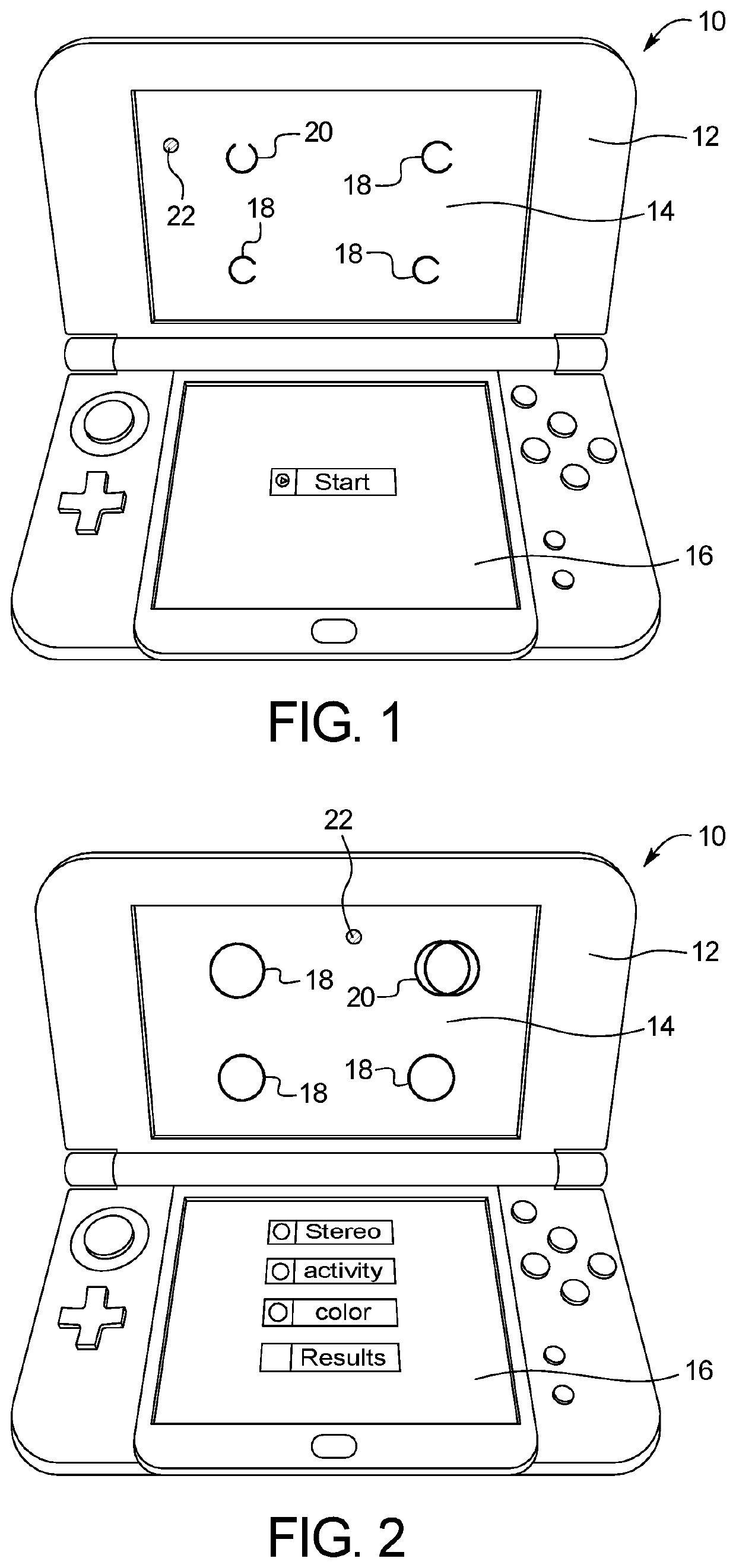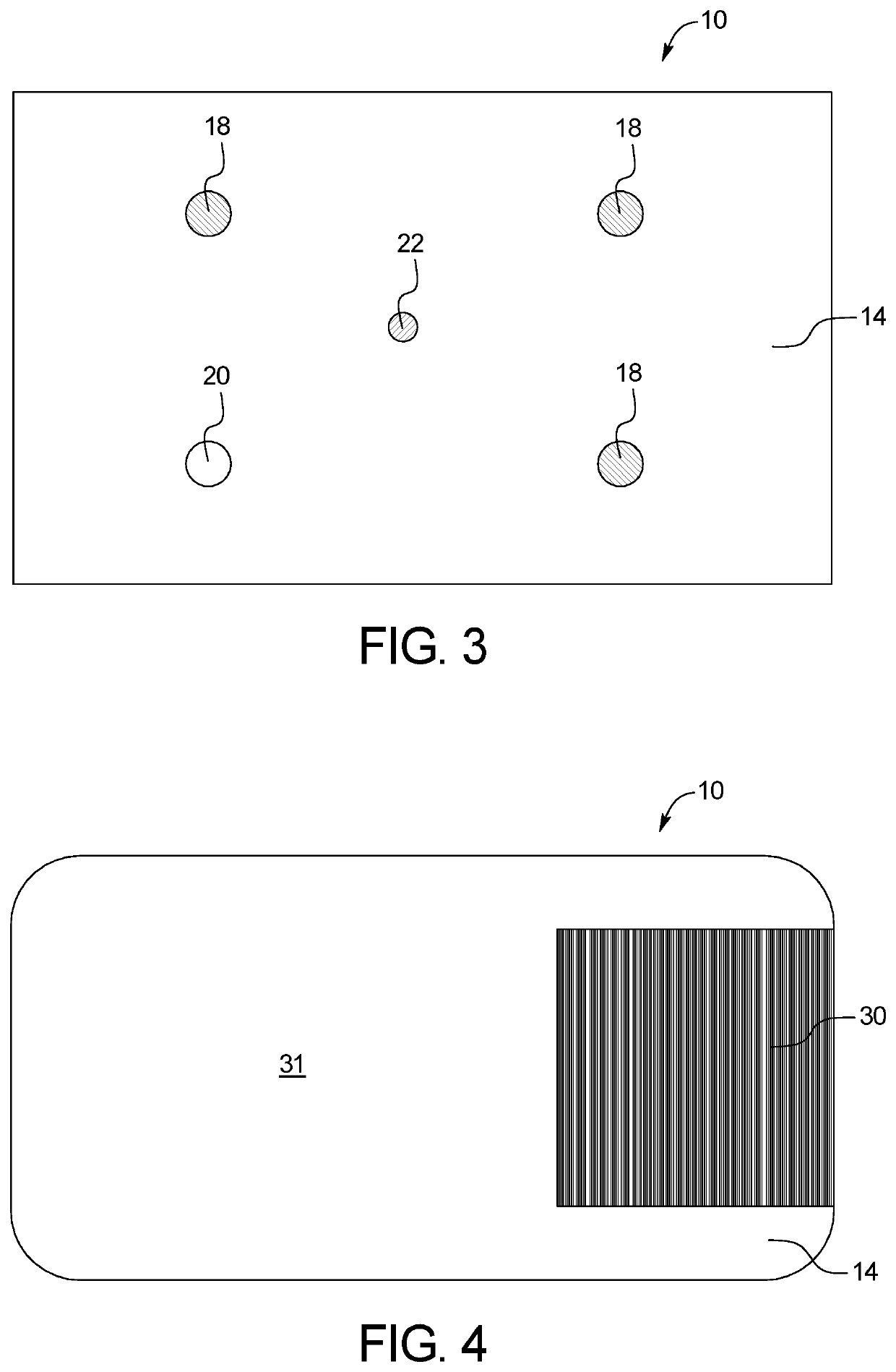Systems and methods for eye evaluation and treatment
a system and eye technology, applied in the field of systems and methods for assessing and treating human vision, can solve the problems of inability to accurately estimate the visual acuity of infants, inability to train personnel and expensive, and inability to meet the needs of patients,
- Summary
- Abstract
- Description
- Claims
- Application Information
AI Technical Summary
Benefits of technology
Problems solved by technology
Method used
Image
Examples
Embodiment Construction
[0031]The present disclosure provides systems for visual assessment that engage a test subject in a familiar video game format. As used herein, the computer system, regardless of the operating system that it uses or its source of design or manufacture, has a data input means such as a keyboard and / or touch screen, including a monitor having a screen for displaying alphanumeric and graphic images. A child's natural desire to play games encourages and insures the child's participation. During the course of game play, the system automatically assesses for visual acuity, stereopsis, binocularity, game alignment, and if appropriate color vision. In an example, a race car video game is selected to provide the testing motif to maximize the child's interest and participation. The particular game chosen to encourage the child's cooperation may vary; however, the game can be standardized so that the same presentation is provided to all of the students and that variations in the test results d...
PUM
 Login to View More
Login to View More Abstract
Description
Claims
Application Information
 Login to View More
Login to View More - R&D
- Intellectual Property
- Life Sciences
- Materials
- Tech Scout
- Unparalleled Data Quality
- Higher Quality Content
- 60% Fewer Hallucinations
Browse by: Latest US Patents, China's latest patents, Technical Efficacy Thesaurus, Application Domain, Technology Topic, Popular Technical Reports.
© 2025 PatSnap. All rights reserved.Legal|Privacy policy|Modern Slavery Act Transparency Statement|Sitemap|About US| Contact US: help@patsnap.com



